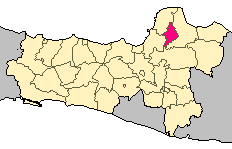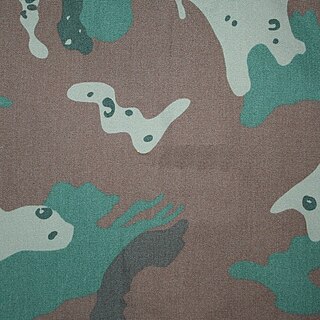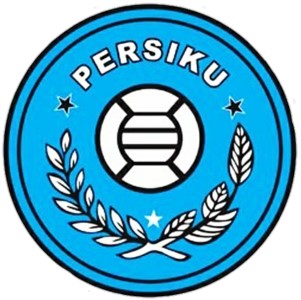Related Research Articles

The kudus are two species of antelope of the genus Tragelaphus:

The lesser kudu is a forest antelope found in East Africa. It is placed in the genus Tragelaphus and family Bovidae. It was first scientifically described by the English zoologist Edward Blyth in 1869. The head-and-body length is typically 110–140 cm (43–55 in). Males reach about 95–105 cm (37–41 in) at the shoulder, while females reach 90–100 cm (35–39 in). Males typically weigh 92–108 kg (203–238 lb) and females 56–70 kg (123–154 lb). The females and juveniles have a reddish-brown coat, while the males become yellowish grey or darker after the age of 2 years. Horns are present only on males. The spiral horns are 50–70 cm (20–28 in) long, and have two to two-and-a-half twists.

The greater kudu is a woodland antelope found throughout eastern and southern Africa. Despite occupying such widespread territory, they are sparsely populated in most areas due to declining habitat, deforestation, and poaching. The greater kudu is one of two species commonly known as kudu, the other being the lesser kudu, T. imberbis.
Camo is a frazione of the comune of Santo Stefano Belbo in the Province of Cuneo, in the Italian region Piedmont, located about 60 kilometres (37 mi) southeast of Turin and about 60 km northeast of Cuneo.

Kudus is a regency in Central Java province in Indonesia. Its capital is Kudus. It covers 425.16 km2 and is thus the smallest regency on Java Island in area, and it had a population of 777,437 at the 2010 Census and 849,184 at the 2020 Census, comprising 423,777 males and 425,407 females. It is located east of Semarang, the capital of Central Java.

Sunan Kudus, founder of Kudus, is considered to be one of the Wali Sanga of Java, Indonesia.

The Desert Night Camouflage pattern is a two-color grid camouflage pattern used by the United States military during the Gulf War. It was designed to aid soldiers in concealment from Soviet-based night vision devices (NVDs). The pattern is now considered obsolete due to the increase in capability of foreign night vision devices.

Soldier 2000 is a military camouflage pattern developed by the Council for Scientific and Industrial Research and is in use with the South African National Defence Force (SANDF). It is designed to be effective in all terrains and seasons encountered across South Africa.

The lizard pattern is a family of many related designs of military camouflage pattern, first used by the French Army on uniforms from 1947 to the late 1980s. It was based on the British paratroopers' Denison smock. The use of the pattern is widespread in Africa, despite its association with France, because armed factions and militaries tend to obtain them from whichever source has it available.

Persatuan Sepakbola Indonesia Kudus is an Indonesian football club based in Kudus, Central Java. They currently compete in the Liga 3. Their best achievement was when in 2005 Liga Indonesia Second Division, they managed to become champions in a 2–1 victory over Perserang Serang at the Wergu Wetan Stadium. and one of the Persiku's player, Agus Santiko is also entitled to the title of top scorer by scoring 16 goals.

Camo & Krooked are an electronic music duo from Vienna, Austria with their musical roots embedded in drum and bass, consisting of Reinhard "Camo" Rietsch and Markus "Krooked" Wagner.
The East Kainji languages are spoken in a compact area of the Jos Plateau in Nigeria, near Jos. There are more than 20 of them, most of which are poorly studied.

The Volvo B10B was a rear-engined step deck single-decker bus chassis manufactured by Volvo between 1992 and 2001. The first prototype were built in 1990, but the B10B wasn't launched until the 1992 Geneva Motor Show. It superseded the Leyland Lynx and Volvo B10R. For stage use it was gradually succeeded by the low-entry B10BLE, which was introduced only a year later, though not in all markets. For interurban use the B7R came as a gradual replacement in 1998, and ultimately for coach work, the B12B took over in 2001.

Camós is a village in the province of Girona and autonomous community of Catalonia, Spain. The municipality covers an area of 15.7 square kilometres (6.1 sq mi) and the population in 2014 was 686.
The Smith & Wesson M&P10 is Smith & Wesson's modified version of the AR-10 rifle.

The Frog Skin is a battledress camouflage pattern with mottle and disruptive coloration to blend into the environment similar to a frog's crypsis skin.

Apache Kudu is a free and open source column-oriented data store of the Apache Hadoop ecosystem. It is compatible with most of the data processing frameworks in the Hadoop environment. It provides completeness to Hadoop's storage layer to enable fast analytics on fast data.
The MV Sinar Kudus hijacking was a maritime event that began on 16 March 2011 with four pirates in the Indian Ocean seizing the cargo ship MV Sinar Kudus 456 nautical miles east of Somali coast. The siege ended after a rescue effort by the Indonesian Navy on 1 May 2011. It was the first pirate seizure of an Indonesian merchant ship off the Somali coast.
Mohammed Kudus is a Ghanaian professional footballer who plays as an attacking midfielder for Eredivisie club Ajax and the Ghana national team.
The 1918 Kudus riot was an anti-Chinese riot that took place in the city of Kudus, Semarang Regency, Dutch East Indies, on October 31st 1918. In the riot, Javanese townspeople burned and looted the Chinese district, resulting in roughly 10 deaths and dozens of injuries, and causing half of the Chinese population of the city to flee to Semarang and other cities in Java.
References
- ↑ Kudu-Camo at Ethnologue (18th ed., 2015) (subscription required)